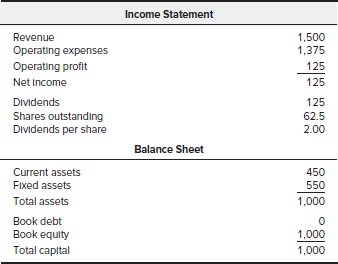Answered step by step
Verified Expert Solution
Question
1 Approved Answer
Main Question: Which proposal is best for investors, why? What do you recommend that Miller do ? The Case: Twenty - nine - year -
Main Question: Which proposal is best for investors, why? What do you recommend that Miller do
The Case:
Twentynineyearold Moe Miller had recently been appointed managing director at M&M Pizza, a premium pizza producer in the small country of Francostan. As a thirdgeneration director of M&M Pizza, Miller was anxious to make his mark on the company with which he had grown up The business was operating well, with full penetration of the Francostani market, but Miller felt that the financial policies of the company were overly conservative. Despite generating strong and steady profitability of about F$ million per year over recent memory, M&M Pizzas stock price had been flat for years, at about F$ per share.
His new office, Miller discovered, had an unobstructed view of the nearby marble quarry. How wonderfully irrelevant, he thought to himself as he turned to the financial analysis on his desk. With borrowing costs running at only he felt confident that recapitalizing the balance sheet would create sustained value for M&M owners. His plan called for issuing F$ million in new company debt and using the proceeds to repurchase F$ million in company shares. The plan would leave assets, profits, and operations of the business unchanged but allow M&M to borrow at the relatively low prevailing market yields on debt and increase dividends per share. Committed to raising the share price, Miller felt it was time to slice up the companys capital structure a little differently.
Francostan
The Mediterranean island nation of Francostan had a long tradition of political and economic stability. The country had been under the benevolent rule of a single family for generations. The national economy maintained few ties with neighboring countries, and trade was almost nonexistent. The population was stable, with approximately million prosperous, welleducated inhabitants. The country was known for its exceptional IT and regulation infrastructure; citizens had unrivaled access to business and economic Page information. Economic policies in the country supported stability. Price inflation for the national currency, the Franco dollar, had been near zero for some time and was expected to remain so for the foreseeable future. Short and longterm interest rates for government and business debt were steady at Occasionally, the economy experienced short periods of economic expansion and contraction.
The countrys population was known for its high ethical standards. Business promises and financial obligations were considered fully binding. To support the countrys practices, the government maintained no bankruptcy law, and all contractual obligations were fully and completely enforced. To encourage economic development, the government did not tax business income. Instead, government tax revenue was levied through personal income taxes. There was a law under consideration to alter the tax policy by introducing a corporate income tax. To maintain business investment incentives under the plan, interest payments would be tax deductible.
The Recapitalization Decision
Millers proposed recapitalization involved raising F$ million in cash by issuing new debt at the prevailing borrowing rate and using the cash to repurchase company shares Miller was confident that shareholders would be better off. Not only would they receive F$ million in cash, but Miller expected that the share price would rise. M&M maintained a dividend policy of returning all company profits to equity holders in the form of dividends. Although total dividends would decline under the new plan, Miller anticipated that the reduction in the number of shares would allow for a net increase in the dividends paid per remaining share outstanding. With a desire to set the tone of his leadership at M&M Miller wanted to implement the initiative immediately. The accounting office had provided a set of pro forma M&M financial statements for the coming year Exhibit
EXHIBIT Pro Forma Financial Statement in millions of Franco dollars, except pershare figures
Source: Created by case writer.
Based on a rudimentary knowledge of corporate finance, Miller estimated the current cost of equity and WACC for M&M with the current nodebt policy at based on a market risk premium of and a company beta of Miller appreciated that, because equity holders bore the business risk, they deserved to receive a higher return. Nonetheless, from a simple comparison of the cost of equity with the cost of debt, equity appeared to be an expensive source of funds. To Miller, substituting debt for equity was a superior financial policy because it gave the company cheaper capital With other business inputs, the company was aggressive in sourcing quality materials and labor at the lowest available cost. Shouldnt M&M do the same for its capital?

Step by Step Solution
There are 3 Steps involved in it
Step: 1

Get Instant Access to Expert-Tailored Solutions
See step-by-step solutions with expert insights and AI powered tools for academic success
Step: 2

Step: 3

Ace Your Homework with AI
Get the answers you need in no time with our AI-driven, step-by-step assistance
Get Started


